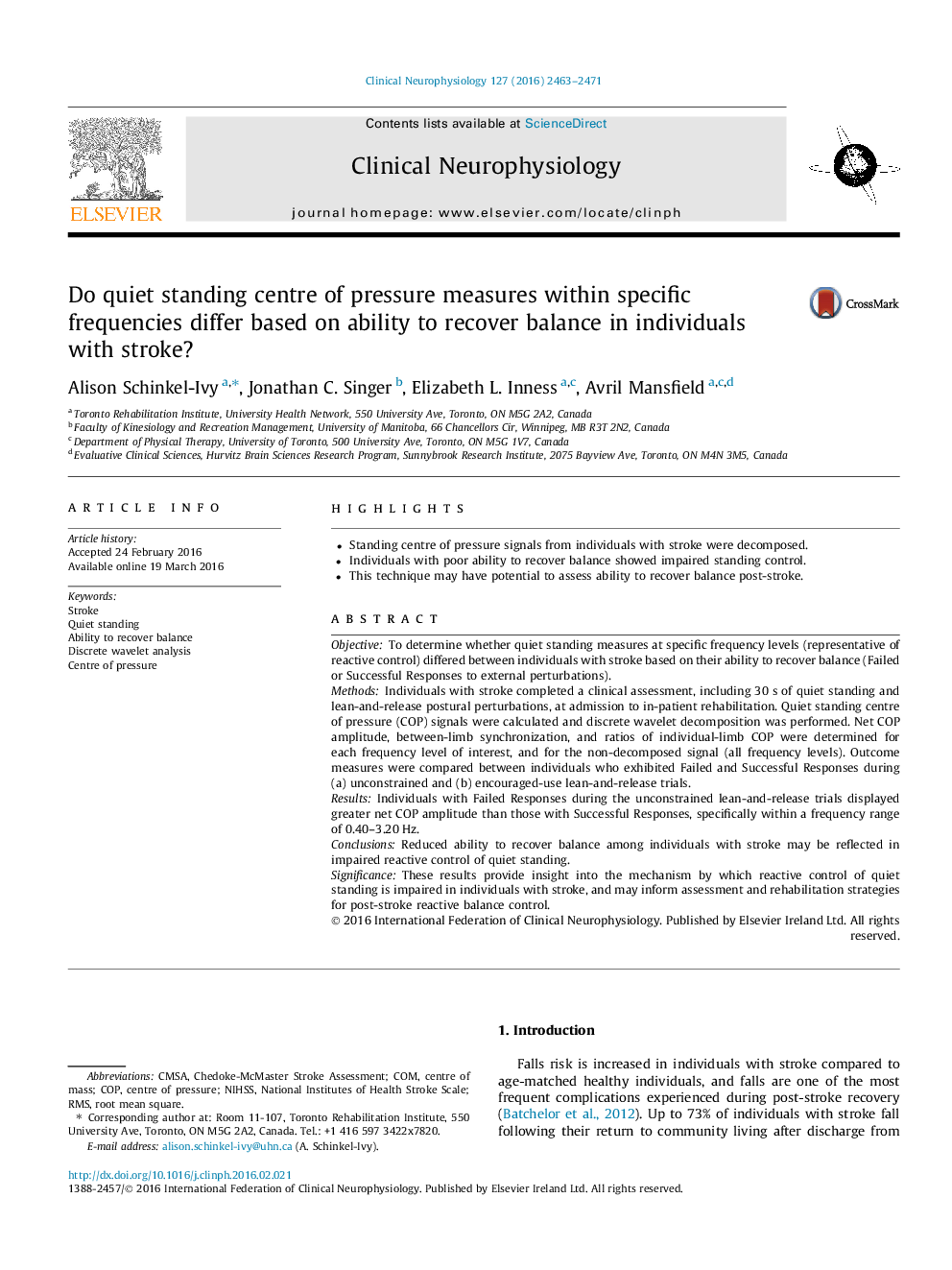| Article ID | Journal | Published Year | Pages | File Type |
|---|---|---|---|---|
| 3042753 | Clinical Neurophysiology | 2016 | 9 Pages |
•Standing centre of pressure signals from individuals with stroke were decomposed.•Individuals with poor ability to recover balance showed impaired standing control.•This technique may have potential to assess ability to recover balance post-stroke.
ObjectiveTo determine whether quiet standing measures at specific frequency levels (representative of reactive control) differed between individuals with stroke based on their ability to recover balance (Failed or Successful Responses to external perturbations).MethodsIndividuals with stroke completed a clinical assessment, including 30 s of quiet standing and lean-and-release postural perturbations, at admission to in-patient rehabilitation. Quiet standing centre of pressure (COP) signals were calculated and discrete wavelet decomposition was performed. Net COP amplitude, between-limb synchronization, and ratios of individual-limb COP were determined for each frequency level of interest, and for the non-decomposed signal (all frequency levels). Outcome measures were compared between individuals who exhibited Failed and Successful Responses during (a) unconstrained and (b) encouraged-use lean-and-release trials.ResultsIndividuals with Failed Responses during the unconstrained lean-and-release trials displayed greater net COP amplitude than those with Successful Responses, specifically within a frequency range of 0.40–3.20 Hz.ConclusionsReduced ability to recover balance among individuals with stroke may be reflected in impaired reactive control of quiet standing.SignificanceThese results provide insight into the mechanism by which reactive control of quiet standing is impaired in individuals with stroke, and may inform assessment and rehabilitation strategies for post-stroke reactive balance control.
